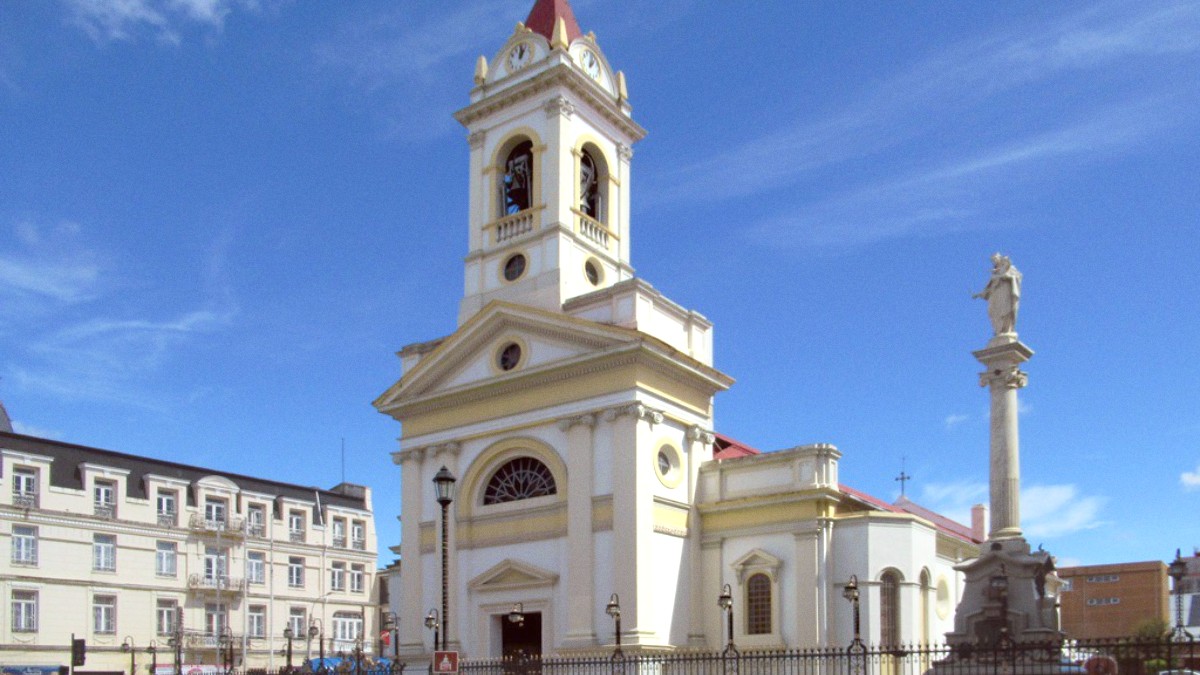
Southern Patagonia, Chile
Punta Arenas cuisine has strong Patagonian, Croatian, and Spanish influences. Hearty proteins like lamb and fresh seafood are prominent.
The cold climate gives rise to comforting, warming dishes, perfect for visitors.
Patagonian lamb ('cordero magallánico'), often spit-roasted 'al palo'. Beef is also common.
King Crab ('centolla'), sea urchin ('erizo'), abalone ('locos'), and mussels ('choritos').
A staple, used in various forms from side dishes to components of hearty stews.
This is the ultimate Patagonian culinary experience. A whole lamb roasts slowly over an open fire for hours.
Find it in traditional Patagonian restaurants, often called "quincho-style places," or on estancias.
Freshly caught from the cold Patagonian waters. Often served simply boiled with mayonnaise or in a savory crab pie ('pastel de centolla').
Seafood restaurants throughout the city offer this delicacy.
A unique delicacy for seafood enthusiasts. Typically eaten raw, often with a squeeze of lemon and some chopped onion.
You find it in specialized seafood restaurants.
The Chilean version of a hot dog, loaded with toppings like mashed avocado, mayonnaise, chopped tomatoes, and sauerkraut.
Empanadas and Sopaipillas are widely available at bakeries and small eateries for quick, satisfying snacks.
Some upscale hotels house restaurants offering refined Patagonian cuisine and international dishes.
Numerous options in the city center offering a mix of Chilean, Patagonian, and international fare.
For affordable and authentic options, look for small cafes and 'picadas' serving simple, hearty meals.
Mainly a fish market, but it also has some stalls that offer prepared seafood dishes and local produce.
A good spot for a fresh, casual meal.
While the focus remains on Patagonian and Chilean food, you find a limited but growing selection of Italian, Chinese, and other international restaurants.
Most of these are in the city center.
Chile's national drink, with Pisco brandy, lemon juice, sugar, and egg white.
Explore local varietals like Carmenere. Many restaurants offer a good selection.
A regional variation of the Pisco Sour, made with the tart calafate berries.
German-inspired cakes and shortbread cookies filled with dulce de leche.
Carry a Translation card explaining your dietary restrictions in Spanish.
Naturally gluten-free dishes like roasted lamb or plain fish are generally safe bets.
Self-catering from supermarkets offers the most control over your ingredients and preparations.
Use a Spanish phrasebook to communicate needs.
While awareness is growing, direct communication with restaurant staff using a translation card will greatly aid your dining experience.
For highly specific or severe allergies, consider bringing your own safe food items or cooking your own meals.
Formal cooking classes for Patagonian cuisine are limited. Some private tours might include a cooking demonstration or a meal.
Food tours might focus on visiting local markets and tasting regional products, like cheeses, jams, or artisanal breads.
Many working sheep farms ('estancias') near Punta Arenas offer tours that include traditional Patagonian lamb roasts.
Staying in local guesthouses ('hospedajes') gives an authentic cultural exchange with residents.
This directly supports local businesses and families.
While formal community-based tourism initiatives are limited, guesthouses give valuable interaction.
Learn about local life and traditions from your hosts.
Punta Arenas food scene builds on its rugged environment and historical influences.
Cordero al palo is a must-try, iconic regional dish, slowly roasted for flavor.
King Crab and sea urchin highlight the coastal bounty, served simply to emphasize their natural taste.